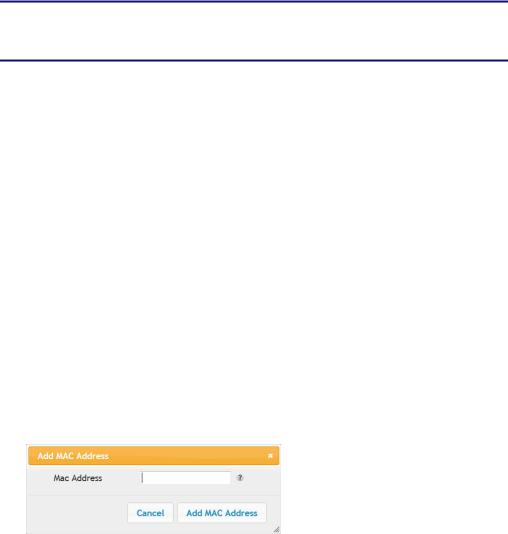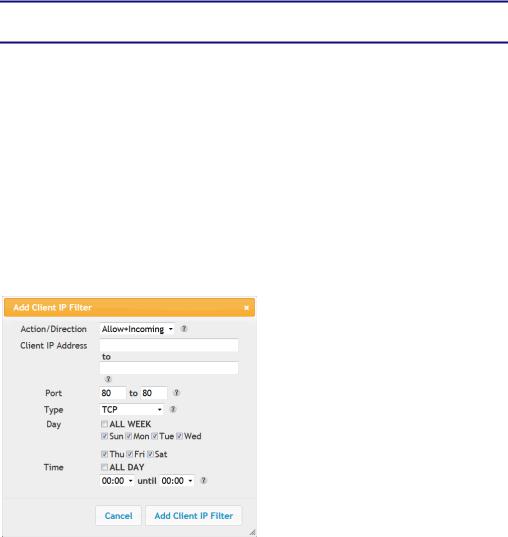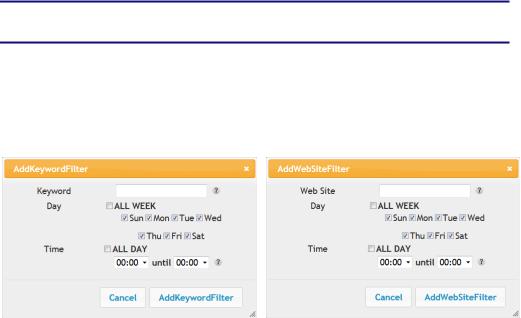ARRIS TG1672G-NA User Manual

Touchstone16xx Gateway
Router Setup - Web GUI
User’s Guide
Standard 1.0
November 2013
ARRIS Trademarks, Copyright, and Other Proprietary Information
©ARRIS Enterprises, Inc. 2013 All rights reserved. No part of this publication may be reproduced in any form or by any means or used to make any derivative work (such as translation, transformation, or adaptation) without written permission from ARRIS Enterprises, Inc. (“ARRIS”). ARRIS reserves the right to revise this publication and to make changes in content from time to time without obligation on the part of ARRIS to provide notification of such revision or change.
ARRIS provides this guide without warranty of any kind, implied or expressed, including, but not limited to, the implied warranties of merchantability and fitness for a particular purpose. ARRIS may make improvements or changes in the product(s) described in this manual at any time. The capabilities, system requirements and/or compatibility with third-party products described herein are subject to change without notice.
ARRIS and the ARRIS logo are all trademarks of ARRIS Enterprises, Inc. Other trademarks and trade names may be used in this document to refer to either the entities claiming the marks and the names of their products. ARRIS disclaims proprietary interest in the marks and names of others.
Page 2 of 96 November 2013
Table of Contents
Section 1:
Configuring your Router and your Wireless LAN Connection
1 |
Introduction .................................................................................................................... |
8 |
|
|
1.1 |
Pre-Configuration Requirements................................................................................................ |
8 |
|
|
1.1.1 User Guides 8 |
|
2 |
Basic Configuration .......................................................................................................... |
9 |
|
|
2.1 |
Accessing the Configuration Interface........................................................................................ |
9 |
|
2.2 |
Configuring Your Wireless Network.......................................................................................... |
10 |
|
|
2.2.1 Enabling or Disabling the Wireless Network .................................................................... |
10 |
|
|
2.2.2 Changing Your Login Password......................................................................................... |
10 |
|
|
2.2.3 Changing the Default Wireless Network Name (SSID)...................................................... |
11 |
|
|
2.2.4 Selecting the Operating Channel ...................................................................................... |
12 |
|
|
2.2.5 Setting the Wireless Network Security Mode................................................................... |
12 |
|
2.3 |
Configuring Wi-Fi Protected Setup (WPS)................................................................................. |
13 |
|
2.4 |
Troubleshooting Your Wireless Connection ............................................................................. |
13 |
|
|
2.4.1 Factors Affecting Wireless Range ..................................................................................... |
13 |
|
|
2.4.2 Interference from Other Wireless Devices ....................................................................... |
14 |
|
|
2.4.3 Client Device Hardware/Software Configuration ............................................................. |
15 |
|
2.5 |
Setting Up Your WAN Connection ............................................................................................ |
17 |
3 |
Advanced Configuration Options.................................................................................... |
18 |
|
|
3.1 |
Introduction .............................................................................................................................. |
18 |
|
3.2 |
WAN Setup – Configuring Dynamic Routing (RIP) - (Technician Level Only) ............................ |
18 |
|
3.3 |
WAN Setup – Configuring Dynamic Routing (RIPng) – (Technician Level Only) ....................... |
19 |
|
3.4 |
LAN Setup – Configuring DHCP ................................................................................................. |
19 |
|
|
3.4.1 LAN Setup – Adding and Deleting DHCP Clients ............................................................... |
20 |
|
3.5 |
LAN Setup – Selecting the NAT Mode....................................................................................... |
20 |
|
3.6 |
Wireless Setup – Setting the Wireless Mode............................................................................ |
21 |
|
3.7 |
2.4 GHz Wireless Setup – Setting the 802.11n Operation Mode.............................................. |
21 |
|
3.8 |
Wireless Setup – Using MAC Address Filtering......................................................................... |
22 |
|
|
3.8.1 Finding the MAC Address of a Computer ......................................................................... |
23 |
|
|
November 2013 |
Page 3 of 96 |
|
3.9 |
Firewall – General Firewall Configuration Settings................................................................... |
24 |
|
3.10 |
Firewall – Configuring a Virtual Server (Port Forwarding)........................................................ |
24 |
|
3.11 |
Firewall – Configuring Port Triggers.......................................................................................... |
25 |
|
3.12 |
Firewall – Configuring Client IP Filters ...................................................................................... |
26 |
|
3.13 |
Firewall – Configuring Client IPV6 Filters.................................................................................. |
27 |
|
3.14 |
Firewall – Configuring DMZ for Gaming or Conferencing Applications.................................... |
28 |
|
3.15 |
Firewall – Using Parental Controls ............................................................................................ |
29 |
|
3.16 |
Utilities – Viewing Network System Information...................................................................... |
30 |
|
3.17 |
Utilities – Restarting the Router ............................................................................................... |
30 |
|
3.18 |
Utilities – Reverting to Factory Default Settings....................................................................... |
30 |
|
3.19 |
Utilities – Backing up your Settings........................................................................................... |
30 |
|
3.20 |
Utilities –Restoring your Settings.............................................................................................. |
31 |
|
3.21 |
Utilities – Viewing the System Logs .......................................................................................... |
31 |
|
3.22 |
Utilities – DDNS......................................................................................................................... |
31 |
4 |
Introduction .................................................................................................................. |
34 |
|
5 |
Basic Setup .................................................................................................................... |
35 |
|
|
5.1 |
BASIC SETUP – Login ................................................................................................................. |
35 |
|
5.2 |
Basic SETUP – System Basic Setup – WPA-PSK or WPA2/PSK Security (default)...................... |
36 |
|
5.3 |
BASIC SETUP – Change Password.............................................................................................. |
39 |
6 |
WAN Setup .................................................................................................................... |
40 |
|
|
6.1 |
WAN SETUP – Dynamic Configuration Settings ........................................................................ |
40 |
|
6.2 |
WAN SETUP – Static IP Connection Type.................................................................................. |
41 |
|
6.3 |
WAN SETUP – Dynamic Configuration Settings (IPV6) ............................................................. |
43 |
|
6.4 |
WAN SETUP – Static IP Connection Type (IPV6) ....................................................................... |
44 |
|
6.5 |
WAN SETUP – Routing (Technician Level Only) ........................................................................ |
46 |
7 |
LAN Setup...................................................................................................................... |
48 |
|
|
7.1 |
LAN SETUP – LAN Settings......................................................................................................... |
48 |
|
7.2 |
LAN SETUP – LAN Settings (IPV6).............................................................................................. |
51 |
|
7.3 |
LAN Setup – Client List .............................................................................................................. |
54 |
|
7.4 |
LAN Setup – Ports ..................................................................................................................... |
56 |
Page 4 of 96 November 2013
8 Wireless Setup............................................................................................................... |
|
57 |
|
8.1 |
Wireless 2.4 |
GHz – System Basic Setup .................................................................................... |
57 |
8.2 |
Wireless 2.4 |
GHz – Advanced Settings...................................................................................... |
60 |
8.3 |
Wireless 2.4 GHz – MAC Address Control................................................................................. |
63 |
|
8.4 |
Wireless 2.4 |
GHz – Wireless Client List..................................................................................... |
65 |
8.5 |
Wireless 5 GHz – System Basic Setup ....................................................................................... |
66 |
|
8.6 |
Wireless 5 GHz – Advanced Settings......................................................................................... |
68 |
|
8.7 |
Wireless 5 GHz – MAC Address Control.................................................................................... |
70 |
|
8.8 |
Wireless 5 GHz – Wireless Client List........................................................................................ |
72 |
|
9 Firewall 73
9.1 |
Firewall – Firewall Settings ....................................................................................................... |
73 |
9.2 |
Firewall –Virtual Servers Configuration (Port Forwarding)....................................................... |
75 |
9.3 |
Firewall – Port Triggers Configuration ...................................................................................... |
76 |
9.4 |
Firewall – Client IP Filters Configuration................................................................................... |
77 |
9.5 |
Firewall – Client IP Filters (IPV6) Configuration ........................................................................ |
78 |
9.6 |
Firewall – DMZ Settings ............................................................................................................ |
80 |
9.7 |
Firewall – Parental Controls...................................................................................................... |
81 |
9.8 |
Firewall – ALG Settings.............................................................................................................. |
83 |
10 Utilities 84
10.1 |
Utilities – System Information .................................................................................................. |
84 |
10.2 |
Utilities –Restart Router............................................................................................................ |
87 |
10.3 |
Utilities – Factory Defaults........................................................................................................ |
88 |
10.4 |
Utilities – Save/Backup Settings................................................................................................ |
89 |
10.5 |
Utilities – Restore Settings........................................................................................................ |
90 |
10.6 |
Utilities – System Settings......................................................................................................... |
91 |
10.7 |
Utilities – Language................................................................................................................... |
92 |
10.8 |
Utilities – System Logs .............................................................................................................. |
93 |
10.9 |
Utilities –DDNS.......................................................................................................................... |
94 |
11 MoCA Status.................................................................................................................. |
95 |
|
November 2013 Page 5 of 96
(blank page)
Page 6 of 96 November 2013
Section 1
Configuring your Router and your Wireless LAN Connection
Touchstone 16xx Gateway Router Setup – Web GUI User’s Guide
1 Introduction
This section explains how to set up your router and configure your wireless connection, including:
Basic Configuration
Advanced Configuration
1.1 Pre-Configuration Requirements
IMPORTANT: In order to configure your router, you should have already done the following:
Installed the router hardware as described in Installing and Connecting your ( Product Name) in the User’s Guide for your specific product.
Established a wired Ethernet connection between your computer and your ARRIS router, as follows:
-Connect an Ethernet cable to your computer and to an available Ethernet port on the back of your router.
-Configure the Ethernet connection as explained in Configuring Your Ethernet Connection in the User’s Guide for your specific product.
1.1.1User Guides
If you do not have the User Guide for your product, you can download one here:
http://www.arrisi.com/support/guides/
Page 8 of 96 November 2013

Section 1: Configuring Your Router and Your Wireless LAN Connection
2 Basic Configuration
The router ships with a basic factory default configuration that should allow you to immediately access the Internet after installing the hardware according to your User’s Guide.
If you need to modify the routers default basic settings, or if you want to configure advanced settings, refer to the appropriate instructions in this document.
As a minimum, it is recommended that you:
Change the default login password
Change the default wireless network name, also called the Service Set Identifier (SSID)
Wireless LAN Default Security Setting: The router ships with wireless LAN security set by default. See the security label on your product for the factory security settings: network name (SSID), encryption method, network key, and WPS PIN.
If you need to modify the router’s default wireless security settings, or if you want to configure any other settings, refer to the appropriate instructions in this document.
Note: You must set up your computer and other client devices to work with the security settings on the router. Refer to the documentation for your client device for instructions on setting security. If your computer or client device supports WiFi Alliance WPS (Wireless Protected Setup), activate WPS on your computer or client device and the router simultaneously to easily set up your system security.
2.1 Accessing the Configuration Interface
Perform the following steps to access the configuration interface.
Note: You should have already performed the steps described in paragraph 1.1 PreConfiguration Requirements.
1. If security has been properly set up on your computer to access the wireless LAN on the router, use the connection utility for your operating system to connect to the wireless LAN using its network name (SSID), as shown on the security label.
Note: If you cannot access the wireless LAN, you must first establish a wired
Ethernet connection between your computer and the router.
2.In your web browser, open the page http://192.168.0.1/ to access the wireless router setup. The Login screen displays.
3.Enter the user name and password and click the Apply button to log in.
November 2013 Page 9 of 96

Touchstone 16xx Gateway Router Setup – Web GUI User’s Guide
Note: The default user name is “admin”. The default password is “password”, in lower case letters.
The System Basic Setup screen displays.
4.Set basic setup configuration parameters as required for your system.
Note: Most configuration parameters that you may want to set can be accessed on the System Basic Setup screen or under the More LAN Settings or More Wireless Settings links.
2.2Configuring Your Wireless Network
Perform the following procedures to make the basic configuration settings for your wireless network.
2.2.1 Enabling or Disabling the Wireless Network
Perform the following steps to enable the wireless network.
1.Access and log into the configuration interface.
2.Click the Basic Setup tab.
3.Click the Enable Wireless checkbox to enable wireless networking.
4.Click the Apply button at the bottom of the screen.
2.2.2Changing Your Login Password
You should change your login password to something other than the default password.
Note: The default user name is “admin”. The default password is “password”, in lower case letters.
Perform the following steps to change your password.
1.Access and log into the configuration interface via a direct wired Ethernet connection or a wireless connection.
2.Click the Basic Setup tab.
3.Click Change Password in the side menu to display the change password screen.
Page 10 of 96 November 2013

Section 1: Configuring Your Router and Your Wireless LAN Connection
4.Enter your old password.
5.Enter your new password twice.
Note: Passwords are case-sensitive. Valid characters are the numbers 0 to 9, the letters a through z and A through Z, and printable special characters (such as $, !, ?, &, #, @, and others.)
6.Click the Apply button.
2.2.3Changing the Default Wireless Network Name (SSID)
While still on the Basic Setup screen, perform the following steps to change your wireless 2.4 GHz and/or wireless 5 GHz network name.
1.Enter a unique user friendly name to identify your wireless network in the Wireless Network Name (SSID) field.
Note: This name is also referred to as the Service Set Identifier (SSID). The name can be up to 32 characters long.
2.To set the Broadcast Network Name (SSID) option, click More Wireless Settings under either Wireless 2.4 GHz or Wireless 5 GHz and verify the setting under Basic Setup.
Note: – Checking te Broadcast Network Name (SSID) checkbox allows the SSID to be broadcast by the router. If enabled, your SSID could be obtained allowing unauthorized access to your network. If you would like others not to see your access point, uncheck the checkbox to hide the SSID.
3.Click the Apply button at the bottom of the screen.
November 2013 Page 11 of 96

Touchstone 16xx Gateway Router Setup – Web GUI User’s Guide
2.2.4 Selecting the Operating Channel
While still on the Wireless 2.4 GHz or Wireless 5 GHZ System Basic Setup screen, perform the following steps to select a communications channel for your router.
1.Select AUTO or a specific channel number from the Channel drop-down list.
Note: The default setting is “Auto”, in which the router selects a channel with the least amount of interference to use. . For 2.4 GHz, if you manually select a channel, it’s best to choose channel 1, 6, or 11, since these channels do not overlap. If another unit is operating in the area, choose a channel that is farthest away from the channel that unit uses. For example, if one is using channel 11, set yours to channel 1. For 5 GHz choose a channel that is farthest away from the channel used by any other unit operating in the area. If you experience interference or poor performance on a particular channel, try a different channel..
2.2.5Setting the Wireless Network Security Mode
The router ships with wireless LAN security set by default. See the security label on your product for the factory security settings: network name (SSID), pre-shared key, security mode, and WPS PIN.
Note: You must set up your computer and other client devices to work with the security settings on the router. Refer to the documentation for your client device for instructions on setting security. If your computer or client device supports WiFi Alliance WPS (Wireless Protected Setup), activate WPS on your computer or client device and the router simultaneously to easily set up your system security.
If you need to modify the router’s default wireless security settings perform the following steps:.
1.Access and log into the configuration interface.
2.Click the Wireless 2.4 GHz or Wireless 5 GHz tab.
3.Under Basic Setup, select the desired security mode from the Security Mode drop-down list.
The screen will change and be populated with a section for configuring the specific security mode that you selected.
4.Set the required configuration parameters for the security mode you selected.
Note: Refer to Wireless 2.4 GHz or Wireless 5 GHZ Setup in Section 2 - Web GUI Screens and Configuration Parameter Reference for specific information on the security mode configuration parameters.
5.Click the Apply button at the bottom of the screen.
Page 12 of 96 November 2013

Section 1: Configuring Your Router and Your Wireless LAN Connection
2.3 Configuring Wi-Fi Protected Setup (WPS)
WPS is a standard method for easily configuring a secure connection between your router and computers or other wireless devices (known as enrollees) that support WPS. When WPS is enabled you can attach other wireless devices by pressing the WPS buttons on the device (if equipped) and on your router, or by entering the enrollee’s PIN and then clicking the Start WPS Association icon.
Perform the following steps to enable the wireless network.
1.Access and log into the configuration interface.
2.Click the Basic Setup tab.
3.Click the WPS Enable checkbox and click the Apply button to enable WPS on your system.
4.Select the mode from the WPS Mode drop-down menu. It can be set to PBC (Push Button Control) or PIN Code.
If your client device has a WPS button, select PBC and go to step 5a.
If your client device has a PIN number select PIN Code and go to step 5b.
5.a) If using PBC, press the WPS buttons on the client device and on your router simultaneously to start the WPS association.
b)If using PIN codes, enter the enrollee’s PIN in the Enrollee PIN Code field, and then click the Start WPS Association icon. Enter the router’s PIN code in the Device PIN Code field if requested during connection.
6.If the connection is successful, the WPS indicator light on the router stops flashing and remains lit. If unsuccessful, the WPS light continues to flash for up to two minutes (indicating that it’s ready to accept a client connection) and then turns off. If the WPS light turns off, start the association process over.
2.4Troubleshooting Your Wireless Connection
The three main factors that affect wireless network performance are:
Range from the Client Devices
Interference from other Wireless Devices
Client Device hardware/software Configuration
2.4.1 Factors Affecting Wireless Range
How close are your wireless devices to your router? The router’s wireless connection range is typically 100 to 200 feet (30m to 65m).
Note: You should try to centralize the router in relation to where the wireless client devices will usually be located.
A number of factors can affect the usable range for wireless connections, as described in this table.
November 2013 Page 13 of 96

Touchstone 16xx Gateway Router Setup – Web GUI User’s Guide
Affect on Range |
Factor |
|
|
|
|
Increases Range |
• Raising the unit above the devices (for example, installing |
|
|
the router in the upper floor of a multi-story dwelling) |
|
|
• Setting the transmit power level to High |
|
|
|
|
Decreases Range |
• Lowering the unit below the devices (for example, installing |
|
|
the router in a basement) |
|
|
• Metal or concrete walls between the router and client |
|
|
devices |
|
|
• Large metal appliances, aquariums, or metal cabinets |
|
|
between the router and client devices |
|
|
• Interference and RF noise (2.4 GHz cordless phones, |
|
|
microwave ovens, or other wireless networks) |
|
|
• Setting the transmit power level to Medium or Low |
|
|
• Setting the wireless mode to 5 GHz reduces interference but |
|
|
also decreases range. |
|
|
|
Note: Decreasing the range of your wireless network may be beneficial, as long as the decreased range is sufficient for your needs. By limiting your network’s range, you reduce interference with other networks and make it harder for unwanted users to find and connect to your network.
2.4.2 Interference from Other Wireless Devices
Interference from other equipment operating at 2.4 GHz or 5 GHz in the area of your wireless network can significantly affect the range and performance of your network, such as:
Cordless phones
Wireless speakers
Microwave ovens
Baby monitors
Gaming Consoles: such as Wii™, Xbox, and PlayStation®
Any other devices operating at 2.4 GHz or 5 GHz
Note: If your cordless phones or other wireless devices are interfereing with your wireless network’s performance, replace them with a similar device that operates on a different frequency if possible. For example, change to 5.8 GHz cordless phones.
Page 14 of 96 November 2013

Section 1: Configuring Your Router and Your Wireless LAN Connection
2.4.3 Client Device Hardware/Software Configuration
Client device hardware/software configuration can also affect your wireless network performance.
For example, your computer’s operating system, network adapter, processor, and hard drive access speed can all affect the transfer speeds that you experience across the network.
If wireless performance is slow, check the following items.
Verify which 802.11 Standard the Wireless Clients are Capable Of
If your client device network adapters use the older 802.11b or 802.11g standards, you should upgrade them to the 802.11n standard. Network adapters using the older standards can reduce the performance of your entire network.
802.11b (becoming more rare but not extinct yet) is much slower than 802.11g, which is slower than 802.11n. The MAXIMUM theoretical limit for each standard is as follows.
802.11b: 11 Mbps
802.11g: 54 Mbps
802.11n: 130 Mbps to 450 Mbps (depending on the wireless router AND wireless client hardware)
Note: Actual maximum throughput performance typically does not exceed 50% of the above values.
Perform a Site Survey to Determine the Best Channel
Use wireless network scanning software such as MetaGeek’s free inSSIDer tool to see how many other wireless routers and access points are broadcasting.
For wireless 2.4 GHz, try to find the cleanest channel among channels 1, 6, and 11. These are the only three channels that do not overlap. If there are no good options among channels 1, 6 and 11, you can try channel 4 or 8. However, selecting these channels can cause degraded throughput speeds if there is a lot of traffic on channel 1, 6, or 11. For wireless 5 GHz, choose a channel that is farthest away from the channel used by any other unit operating in the area.
It is a trial and error process to find the best channel. The best setting may change at any time depending on all of the other wireless routers in the environment.
Note: When Touchstone 16xx Gateways are set to Auto channel they will automatically select the cleanest of the available channels upon boot up.
Adjust the Gateway’s Wireless Configuration Settings
Security Mode/Encryption Algorithm
-The recommended security mode/encryption algorithm is WPA2-PSK (AES) for best performance. All other options will result in degraded throughput speeds. For
November 2013 Page 15 of 96
Touchstone 16xx Gateway Router Setup – Web GUI User’s Guide
example, using WEP and WPA reduces throughput by approximately 80% comparatively.
-Note that Security Mode WEP and WPA are not compatible with the 802.11n standard. Performance would be limited to 802.11g speeds of 54mbps. Also, 802.11n requires WPA2 and AES.
Wireless Mode
-Set your wireless mode to optimize performance based on the type of network adapters being used by your network devices, e.g., 802.11b, 820.11g, and 802.11n. Select the proper mode to support all of the wireless devices that will connect to your router. It’s best to have an environment with only one standard and set the Gateway to that standard. Since this is not always feasible, ONLY include the standards that are used in your environment.
-The presence of 802.11b devices in an active network will cause the greatest performance degradation.
BG Protection
-This option allows you to properly operate 802.11b client devices in 802.11g networks. These older 802.11b devices required the unit to add overhead to most transmissions.
Operation Mode
-The options are Mixed mode or Greenfield. Select Mixed mode if you network consists of a mix of 802.11 b, g, and n clients. Select Greenfield if your network consists of ONLY 802.11n clients. The Greenfield mode improves efficiency of networks using only 802.11n devices by eliminating support for the 802.11a/b/g client devices.
Channel Bandwidth (802.11n only)
-Options are 20 MHz or 20/40 MHz . The default setting is 20 MHz. If your wireless network is in a very clean RF environment setting the Channel Bandwidth to 20/40 will increase your throughput by “bonding” two channels. However, if there are any other wireless routers or access points within range of the device it will stay in 20 MHz bandwidth regardless of this setting. This is a WiFi Alliance requirement. (You can verify the channel bandwidth by using the previously mentioned wireless network scanning software, MetaGeek’s inSSIDer.)
Guard Interval (802.11n only)
-This is the time in nanoseconds between symbols for 802.11n frames. Selecting 400ns provides higher throughput in networks where the coverage distance is small (indoors). Selecting 800ns provides higher throughput in networks where the coverage distance is large (outdoors).
Page 16 of 96 November 2013

Section 1: Configuring Your Router and Your Wireless LAN Connection
2.5 Setting Up Your WAN Connection
A Dynamic or DHCP (Dynamic Host Configuration Protocol) connection is the most commonly used WAN connection type.
Note: Do not change this setting unless your Internet Service Provider tells you to use another connection type.
Perform the following steps to change your connection type.
1.Access and log into the configuration interface.
2.Click the WAN Setup tab.
3.Click Dynamic, Dynamic (IPV6), Static, or Static (IPV6) in the side menu to display the appropriate screen for configuring that type of WAN connection.
4.Set the required configuration parameters for the connection type you selected as provided by your Internet Service Provider.
Note: Refer to WAN Setup in Section 2 - Web GUI Screens and Configuration Parameter Reference for specific instructions on setting the various connection type configuration parameters.
5.Click the Apply button at the bottom of the screen.
November 2013 Page 17 of 96

Touchstone 16xx Gateway Router Setup – Web GUI User’s Guide
3 Advanced Configuration Options
3.1 Introduction
This section explains how to use the most common advanced configuration options for your router in the following areas:
WAN Setup
LAN Setup
Wireless Setup
Firewall
Utilities
Note: Refer to Section 2 - Web GUI Screens and Configuration Parameter Reference for additional advanced configuration options.
3.2WAN Setup – Configuring Dynamic Routing (RIP) - (Technician Level Only)
Enabling Dynamic Routing or RIP (Router Information Protocol) allows your router to operate in a network environment with other routers. This is primarily used for office environments or multiple dwelling units where a network with existing routers already exists. Only enable Dynamic Routing if your service provider recommends that you do so.
Requirements
To successfully configure RIP, you must have:
A static IP address assigned by our service provider.
Disabled NAT (Network Address Translation) on your router, which also means you must either assign a static IP address to all devices on your local network or use a DHCP server to assign addresses.
Perform the following steps to enable Dynamic Routing.
1.Access and log into the configuration interface.
2.Click the WAN Setup tab.
3.Click Routing in the side menu to display the routing screen.
4.Click the Enable Dynamic Routing (RIP) checkbox.
Page 18 of 96 November 2013

Section 1: Configuring Your Router and Your Wireless LAN Connection
Note: Refer to WAN Setup in Section 2 - Web GUI Screens and Configuration Parameter Reference for specific instructions on setting the various dynamic routingconfiguration parameters.
5.After setting the necessary configuration parameters, click the Apply button at the bottom of the screen.
6.Set NAT Mode to Bridged on the LAN Setup – LAN Settings screen.
3.3WAN Setup – Configuring Dynamic Routing (RIPng) – (Technician Level Only)
Note: Not available on all models.
Enabling Dynamic Routing for IPV6 or RIPng (Router Information Protocol next generation) allows your router to operate in a network environment with other routers. This is primarily used for office environments or multiple dwelling units where a network with existing routers already exists. Only enable Dynamic Routing if your service provider recommends that you do so.
Requirements
To successfully configure RIPng, you must have:
A static IP address assigned by our service provider.
You must either assign a static IP address to all devices on your local network or use a DHCP server to assign addresses.
Perform the following steps to enable Dynamic Routing for IPV6.
1.Access and log into the configuration interface.
2.Click the WAN Setup tab.
3.Click Routing (RIPng) in the side menu to display the RIPng configuration screen.
4.Click the Enable Dynamic Routing checkbox.
Note: Refer to WAN Setup in Section 2 - Web GUI Screens and Configuration Parameter Reference for specific instructions on setting the various dynamic routingconfiguration parameters.
5.After setting the necessary configuration parameters, click the Apply button at the bottom of the screen.
3.4LAN Setup – Configuring DHCP
DHCP (Dynamic Host Protocol Configuration) is enabled by default on your router which allows your router to act as a DHCP server and automatically assign an IP address to each device on your network.
November 2013 Page 19 of 96

Touchstone 16xx Gateway Router Setup – Web GUI User’s Guide
DHCP is a set of rules used by devices such as a computer, router, or network adapter to allow the device to request and obtain an IP address from a server which maintains a list of addresses available for use. The DHCP server ensures that all IP addresses are unique, e.g., no IP address is assigned to a second device while the first device's assignment is valid (its lease has not expired).
Without DHCP, the IP addresses must be entered manually at each computer or device and a new IP address must be entered each time it moves to a new location on the network.
Perform the following steps to configure DHCP.
1.Access and log into the configuration interface.
2.Click the LAN Setup tab.
3.Click LAN Settings or LAN Settings (IPV6) in the side menu to display the LAN Settings screen.
4.Click the Enable DHCP Server checkbox under DHCP Server Settings.
5.Enter the Start IP Address and End IP Address for the range of IP addresses that the DHCP Server will be allowed to assign to a network device.
6.Enter the Lease Time in seconds before the assigned IP address will expire. (After the lease time is up, the user is automatically assigned a new dynamic IP address.)
Note: Refer to LAN Setup in Section 2 - Web GUI Screens and Configuration Parameter Reference for specific instructions on setting the various DHCP configuration parameters.
7.Click the Apply button at the bottom of the screen.
3.4.1LAN Setup – Adding and Deleting DHCP Clients
The DHCP Client screen shows the host Name, IP address, and MAC Address of each computer that is connected to your network. If a computer does not have a specified host name, then the host Name field will be blank.
Perform the following steps to configure the DHCP Clients.
1.Access and log into the configuration interface.
2.Click the LAN Setup tab.
3.Click Client List in the side menu to display the Client List screen.
4.Click the Add button to add a reserved IP client. Select an existing DHCP client and then click the Delete button to delete the client. Click the Refresh button to update the Clients List.
3.5LAN Setup – Selecting the NAT Mode
NAT (Network Address Translation) allows your router to manipulate IP addresses so that just one single IP address can represent an entire group of computers on your network and let them
Page 20 of 96 November 2013

Section 1: Configuring Your Router and Your Wireless LAN Connection
all communicate with the Internet. This conserves IP addresses and is necessary since there are a finite number of available IP addresses for use.
Perform the following steps to select the NAT Mode.
1.Access and log into the configuration interface.
2.Click the LAN Setup tab.
3.Click LAN Settings in the side menu to display the LAN Settings screen.
4.Select the NAT Mode from the NAT Mode field drop-down list. The optional modes are: Bridged - Data will pass through the device directly without any routing.
Routed with NAT - Data will be routed by the device and all the outgoing packets will be NATed.
Routed without NAT - Data will be routed by the device but all the outgoing packets will not be NATed.
5.Click the Apply button at the bottom of the screen.
Note: A dialog box displays “Restarting your router is recommended when NAT settings change.” Click OK to restart.
3.6Wireless Setup – Setting the Wireless Mode
You can set your wireless mode to optimize performance based on the type of network adapters being used by your network devices, e.g., 802.11b, 820.11g, and 802.11n. Select the proper mode to support all of the wireless devices that will connect to your router.
Perform the following steps to set your wireless mode.
1.Access and log into the configuration interface.
2.Click the Wireless 2.4 GHz and/or Wireless 5 GHz tab.
3.Click Advanced in the side menu to display the Advanced Settings screen.
4.Under Wireless Network Settings select the proper mode from the Wireless Mode dropdown list.
2.4 GHz Options: B/G mixed, B only, G only, N only, G/N mixed, and B/G/N mixed. 5 GHz Options: A/N mixed, A only, and N only.
5.Click the Apply button at the bottom of the screen.
Note: Refer to the Wireless Setup – Advanced screen in Section 2 - Web GUI Screens and Configuration Parameter Reference for instructions on setting additional advanced wireless configuration parameters.
3.72.4 GHz Wireless Setup – Setting the 802.11n Operation Mode
The 802.11 operation mode must be set to work properly with the selected wireless mode setting. The default setting, Mixed Mode, is for networks with a mix of 802.11b/g/n client
November 2013 Page 21 of 96

Touchstone 16xx Gateway Router Setup – Web GUI User’s Guide
devices. Mixed Mode can be used with any Wireless Mode setting. If all of your network devices are 802.11n devices, you can improve the efficiency of your network by setting the Wireless Mode to “N only” and setting the 802.11n operation mode to Greenfield.
Perform the following steps to set your 802.11n operation mode.
1.Access and log into the configuration interface.
2.Click the Wireless 2.4 GHz tab.
3.Click Advanced in the side menu to display the Advanced Settings screen.
4.Under 802.11n Specific Settings select the proper mode from the Operation Mode dropdown list.
Options are: Greenfield and Mixed Mode.
5.Click the Apply button at the bottom of the screen.
Note: Refer to the Wireless Setup – Advanced screen in Section 2 - Web GUI Screens and Configuration Parameter Reference for instructions on setting additional advanced wireless configuration parameters.
3.8Wireless Setup – Using MAC Address Filtering
MAC address filtering allows you to restrict access to your wireless network to those computers you specifically authorize to connect. This filter type is called an Allowed List. Optionally, you can block specific computers from accessing your network. This filter type is called a Blocked List. You have to choose one type or the other.
Perform the following steps to set up MAC address filtering.
1.Access and log into the configuration interface.
2.Click the Wireless 2.4 GHz and/or Wireless 5 GHz tab.
3.Click MAC Address Control in the side menu to display the MAC Address Control screen.
4.Under MAC Address Filtering select the proper filter type from the MAC Address Filter Type drop-down list.
Options are: None, Allowed List, and Blocked List.
5.Under MAC Address Filter List click the Add button to display the Add MAC Address dialog box.
6.Enter the MAC address of a computer that you want to add to the filter list, and then click the Add MAC Address button.
Page 22 of 96 November 2013

Section 1: Configuring Your Router and Your Wireless LAN Connection
Note: If you don’t know how to find your computer’s MAC address, see 3.8.1 Finding the MAC Address of a Computer.
7.Repeat Step 6 for each MAC address you want to add.
Note: To delete a MAC address, first select a MAC address in the list and then click the Delete button.
8.Click the Apply button.
3.8.1Finding the MAC Address of a Computer
Use the specific operating system of your computer to find its MAC address, as follows.
Windows:
From the Start menu, find and select the Control Panel. Double-click Network Connections (Windows XP), or Network & Sharing Center (Windows Vista or Windows 7). Then double-click either “Wireless Network Connection” for a wireless connection, or “Local Area Connection” for an Ethernet connection. Next click the Details button (Windows Vista or Windows 7), or click the Support tab and then the Details button (Windows XP). The “Physical Address” line shows the MAC address.
MacOS X:
Open System Preferences and click the Network icon. To find the Ethernet MAC address, select Built-in Ethernet from the Show drop-down, then click the Ethernet tab. The “Ethernet ID” field shows the MAC address. To find the wireless MAC address, select Airport from the Show dropdown, then click the Airport tab. The “Airport ID” field shows the MAC address.
Linux:
Open a shell window and type /sbin/ifconfig (and press Enter). The wireless interface is eth1 (unless there is no Ethernet adapter, in which case the interface is eth0).
November 2013 Page 23 of 96
Touchstone 16xx Gateway Router Setup – Web GUI User’s Guide
3.9 Firewall – General Firewall Configuration Settings
Your router is equipped with a firewall that will protect your network from a wide array of common hacker attacks, including Ping of Death (PoD) and Denial of Service (DoS) attacks. You can also configure VPN pass-through to enable VPN tunneling using IPSec, PPTP, or L2TP protocols to pass through the router’s firewall so that you can connect to a Virtual Private Network at your office, for example.
You can disable the firewall function if needed. Turning off the firewall protection will not leave your network completely vulnerable to hacker attacks, but it is recommended that you enable the firewall whenever possible.
Perform the following steps to enable the firewall and make general firewall settings.
1.Access and log into the configuration interface.
2.Click the Firewall tab.
3.Click Firewall Settings in the side menu to display the Firewall Settings screen.
4.Check the Enable Firewall checkbox to enable the firewall on your network.
5.Check the Enable DoS Attack Protection Firewall checkbox to protect against DoS attacks.
6.Check the Enable Ping Blocking checkbox to protect against PoD attacks.
7.Check the Enable IPSec Pass Through checkbox to allow IPSec tunnels to pass through the router.
8.Check the Enable PPTP Pass Through checkbox to allow PPTP tunnels to pass through the router.
9.Check the Enable L2TP Pass Through checkbox to allow L2TP tunnels to pass through the router.
10.Check the Enable Block Fragmented IP Packets checkbox to block fragmented IP packets.
11.Click the Apply button at the bottom of the screen.
3.10Firewall – Configuring a Virtual Server (Port Forwarding)
The port forwarding function forwards inbound traffic from the Internet to a specified single device on your network. Examples include allowing access to a web server on your network, peer-to-peer file sharing, applications that allow remote access to your computer, some gaming and videoconferencing applications, and others.
If you have a server in your network that you want to make available to the general Internet, you can configure a virtual server. The firewall passes requests from the Internet to the designated computer on your network. This function works by allowing you to route external (Internet) calls for services such as a web server (port 80), FTP server (Port 21), or other applications through your router to your internal network.
Perform the following steps to configure a virtual server.
1.Access and log into the configuration interface.
2.Click the Firewall tab.
Page 24 of 96 November 2013

Section 1: Configuring Your Router and Your Wireless LAN Connection
3.Click Virtual Servers in the side menu to display the Virtual Server Configuration screen.
4.Check the Add button to display the Add Virtual Server dialog box.
5.Enter the following parameters in the dialog box. Description – Enter a name for the virtual server.
Inbound Port – Enter the inbound port range for the virtual server. It should be the same range as the local port.
Format – Sets the format for the port. Options are TCP, UDP, or BOTH.
Private IP Address – Enter the IP address of the machine on the LAN that you want the connections to go to.
Local Port – Enter the local port range for the virtual server. It should be the same range as the inbound port.
6.Click the Add Virtual Server button to add the virtual server.
Note: To delete a virtual server, first select a virtual server in the list and then click the Delete button.
3.11Firewall – Configuring Port Triggers
Port triggering lets you set the router to watch outgoing traffic for specific port numbers, remember the IP address of the sending computer, and then route the data back to the sending computer when the requested data returns. This is typically used for online gaming and online chat applications.
Perform the following steps to add a port trigger.
1.Access and log into the configuration interface.
2.Click the Firewall tab.
3.Click Port Triggers in the side menu to display the Port Triggers screen.
4.Check the Add button to display the Add Port Trigger dialog box.
November 2013 Page 25 of 96

Touchstone 16xx Gateway Router Setup – Web GUI User’s Guide
5.Enter the following parameters in the dialog box. Description – Enter a name for the port trigger.
Outbound Port – Enter the outbound port range for the port trigger. It should be the same range as the inbound port.
Format – Sets the format for the port. Options are TCP, UDP, or BOTH.
Inbound Port – Enter the inbound port range for the port trigger. It should be the same range as the outbound port.
6.Click the Add Port Trigger button to add the port trigger.
Note: To delete a port trigger, first select a port trigger in the list and then click the Delete button.
3.12Firewall – Configuring Client IP Filters
The router can be configured to restrict access to the Internet, email, or other network services at specific days and times.
Perform the following steps to add a client IP filter.
1.Access and log into the configuration interface.
2.Click the Firewall tab.
3.Click Client IP Filters in the side menu to display the Client IP Filter Configuration screen.
4.Check the Add button to display the Add Client IP Filter dialog box.
Page 26 of 96 November 2013

Section 1: Configuring Your Router and Your Wireless LAN Connection
5.Enter the following parameters in the dialog box.
Client IP Address – Enter the client IP address or range to filter.
Port – Enter the outbound traffic port number range, starting and ending. Type – Sets the port type. Options are TCP, UDP, or BOTH.
Day – Click the check boxes for the days you want access allowed, or click the All Week checkbox for all week.
Time – Sets the start time and end time for the allowed access during the specified days (24hour clock). 00:00 to 24:00 indicates all day, or click the checkbox for All Day.
6.Click the Add Client IP Filter button to add the filter.
Note: To delete a client IP filter, first select aclient IP filter in the list and then click the Delete button.
3.13Firewall – Configuring Client IPV6 Filters
The router can be configured to restrict access to the Internet, email, or other network services.
Perform the following steps to add a client IPV6 filter.
1.Access and log into the configuration interface.
2.Click the Firewall tab.
3.Click Client IPV6 Filters in the side menu to display the Client IPV6 Filter Configuration screen.
4.Check the Add button to display the Add Client IP Filter dialog box.
5.Enter the following parameters in the dialog box.
Action/Direction - Select either Allow+Incoming or Deny+Outgoing to allow data watching this filter and watch incoming data or deny data watching and watch outgoing data.
Client IP Address – Enter the range of IPV6 addresses to filter.
November 2013 Page 27 of 96

Touchstone 16xx Gateway Router Setup – Web GUI User’s Guide
Port – Enter the outbound traffic port number range, starting and ending. Type – Sets the port type. Options are TCP, UDP, or BOTH.
Day – Click the check boxes for the days you want access allowed, or click the All Week checkbox for all week.
Time – Sets the start time and end time for the allowed access during the specified days (24hour clock). 00:00 to 24:00 indicates all day, or click the checkbox for All Day.
6.Click the Add Client IP Filter button to add the filter.
Note: To delete a client IP filter, first select aclient IP filter in the list and then click the Delete button.
3.14Firewall – Configuring DMZ for Gaming or Conferencing
Applications
The DMZ feature allows you to specify one computer on your network to be placed outside of the NAT firewall. This may be necessary if the NAT feature is causing problems with an application such as a game or video conferencing application.
Use this feature only on a temporary basis. The computer in the DMZ is not protected from hacker attacks.
Perform the following steps to put a computer in the DMZ.
1.Access and log into the configuration interface.
2.Click the Firewall tab.
3.Click DMZ in the side menu to display the DMZ Settings screen.
4.Enter the following parameters.
Enable DMZ – Click this checkbox to enable DMZ on your network. WAN IP – Displays the public IP address.
Private IP – Enter the IP address of the computer to be placed in the DMZ. Be sure that the address is not in the range of addresses delivered by the DHCP server if enabled. After placing the computer in the DMZ, all ports on the computer are open to the Internet and not protected.
5.Click the Apply button at the bottom of the screen.
Note: To remove the computer from the DMZ delete the entries and uncheck the Enable DMZ checkbox.
Page 28 of 96 November 2013

Section 1: Configuring Your Router and Your Wireless LAN Connection
3.15Firewall – Using Parental Controls
The Parental Control feature allows you to block specified keywords and web sites from being accessed and also to specify trusted computers in the network. Trusted computers are not affected by the parental control settings. You can add two trusted computers. For example, you may want the computers of the parents to be trusted, while the childrens’ computers have parental controls in effect.
Perform the following steps to set up your Parental Controls.
1.Access and log into the configuration interface.
2.Click the Firewall tab.
3.Click Parental Controls in the side menu to display the Parental Controls screen.
4.Check the Enable Parental Controls checkbox and click the Apply button.
5.Configure any or all of the following parental controls:
Trusted MAC Addresses - Enter the MAC addresses of any “trusted” computers on the network and click the Apply button. Once added, these trusted computers will not be affected by the parental control settings.
Note: Refer to 3.8.1 Finding the MAC Address of a Computer for information on determining the MAC address of your computer.
Keyword and Web Site Filtering - You can add a list of keywords and web sites that you want to block. To add a keyword or web site to the list, click the respective Add button. To delete a keyword or web site from the list, first click its check box and then click the Delete button.
6.Adding a Keyword or Web Site Filter
a)Enter the keyword in the Keyword field or web site URL address in the Web Site field.
b)Click the check boxes for the days you want access blocked, or click the All Week checkbox for all week.
c)Set the start time and end time during the specified days (24-hour clock). (0:00 until 0:00 indicates all day, or click the All Day checkbox.)
November 2013 Page 29 of 96
